ACIN's post in the Watchtower and Lysimachus' recent contributions have inspired me to create some semi-original content of my own for my favorite subforum of the .org. While contemplating a subject to write about, I happened to glance at my sig and a topic became clear. The following is my educated opinion on the German Tiger II tank that operated in the later stages of WW2. It is not meant to be an exhaustive history, but more of a refutation of some common myths about the tank - and an opportunity to share some interesting pictures I have collected of it. It is based primarily on the work of historians Thomas Jentz and Christian Ankerstjerne, with some Wiki quotes (that are also based on Jentz) thrown in for emphasis. Feel free to criticize my work as much of this is from memory, and my apologies for my rather lacking writing skills!
German Propaganda Newsreel Featuring the Tiger II
In WW2 media the Tiger II is often portrayed as a slow, lumbering behemoth that took up valuable resources that would have been better spent on smaller tanks. Countless History/Military Channel top ten shows and pop history 'Tanks of WW2' books from less than reputable publishers reinforce this popular myth, yielding scores of discussion threads on the interwebs that mimic it. In reality, the Tiger II was a very capable, potent fighting machine with a proven combat record of success.
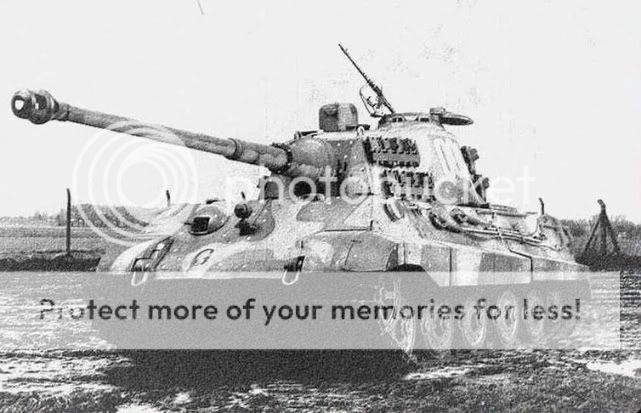
Tiger II in Ambush camouflage Pattern

Example of Ambush Pattern Colors
The culmination of everything the Germans had learned about tank development during WW2, the Tiger II, often referred to as the "King Tiger", and more seldomly the "Royal Tiger", was the last German heavy tank to see service during WW2. It debuted in the battle of Normandy and fought on both the Western and Eastern Fronts in the Wehrmacht and SS heavy tank battalions in limited numbers throughout the rest of the war. As a heavy tank meant to replace the original Tiger, its role was to attack obstacles and enemy strong points, create breakthroughs, and engage enemy armored formations.

Originally Posted by
wiki
The heavy armor and powerful long-range gun gave the Tiger II an advantage against all opposing Western Allied and Soviet tanks attempting to engage it from head on. This was especially true on the Western Front, where until the arrival of the few M26 Pershing in 1945 neither the British nor U.S. forces had brought heavy tanks into service. Only the British QF 17 pounder (76.2 mm) gun using Armour-piercing discarding sabot shot was theoretically capable of penetrating the front of the Tiger II's turret and nose (lower front hull) at 1,100 and 1,200 yd (1,000 and 1,100 m) respectively.[28] Flanking maneuvers were used against the Tiger II to attempt a shot at the thinner side and rear armor, giving a tactical advantage to the Tiger II in most engagements.[47] Moreover, the main armament of the Tiger II was capable of knocking out any Allied tank frontally at ranges exceeding 2.5 kilometres (1.6 mi), beyond the effective range of Allied tank gun.

Tiger II Cutaway (1)
The tank had a 5 man crew, including the commander, driver, gunner, hull machine-gunner, and radio operator. It incorporated sloped armor (which, by the way, was present in German tank designs long before encounters with the T-34 - another myth), Germany's (and arguably the world's) best gun during WW2 - the KwK 43 L/71, a wide-track suspension system that made it even more maneuverable in muddy and sandy conditions than the Sherman and many other allied vehicles due to reduced ground pressure, and a more modular platform designed for ease of production. It was in every way an advancement upon its predecessor, the already formidable Tiger I. More notably, it was a better performing tank than it’s more lauded little brother, the Panther.
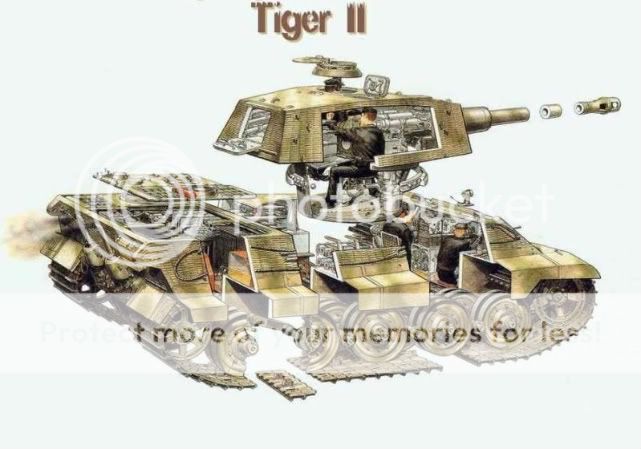
Tiger II Exploded (2)
Despite this, the King Tiger is often criticized incorrectly on a number of factors.
Speed:
This is probably the most propagated, yet demonstrably false, myth about the Tiger II (and Tiger I btw).
Despite being a heavy tank, the Tiger II was as fast as the Panther and faster than all other German AFVs.
Tiger II - Maximum Speed = 41.5 km/h, Road Speed = 38 km/h, Cross Country Speed = 15-20 km/h
Panther - Maximum Speed = 46 km/h, Road Speed = 30-35 km/h, Cross Country Speed = 20 km/h
Pz.IV - Maximum Speed = 38-42 km/h, Road Speed = 25 km/h, Cross Country Speed = 20 km/h
StuG - Maximum Speed = 40 km/h, Road Speed = 20 km/h, Cross Country Speed = 12-15km/h
For comparison, the top speeds of the main Allied medium tanks were:
T-34 - 53.5 km/h
Sherman - 38-46 km/h (dependent on the variant)
And their heavy tanks:
IS-2 - 37 km/h
M26 Pershing - 40 km/h, 8.4 km/h (off-road)
(Apologies for not having detailed speed information on road speed and cross-country speed for these models.)
Obviously, the Tiger II was not a slow tank by any objective standards.
Size:
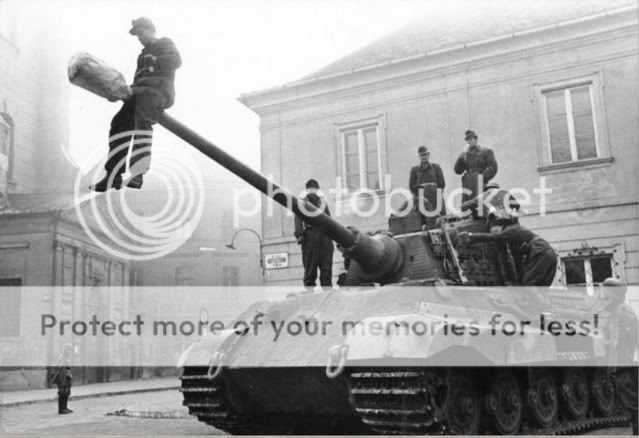
Tiger II at Rest in Budapest
At nearly 70 tonnes, 6.4 meters in length and 3.75 meters in width (platform only), the Tiger II was an enormous tank for the period. However, myths about limitations due to size are greatly exaggerated, specifically those about bridge crossing. The tank’s designers took the structural limitations of European bridges into consideration when developing the tank, and German combat engineers in the field were highly skilled at determining a bridge’s structural limits. In most cases, bridges too small and/or too weak to hold a Tiger II were built over rivers that could easily be forded, due to an advanced snorkel system. In the rare event that a Tiger II could not cross on a bridge or ford one, the standard German 16-ton engineer bridge could carry it.
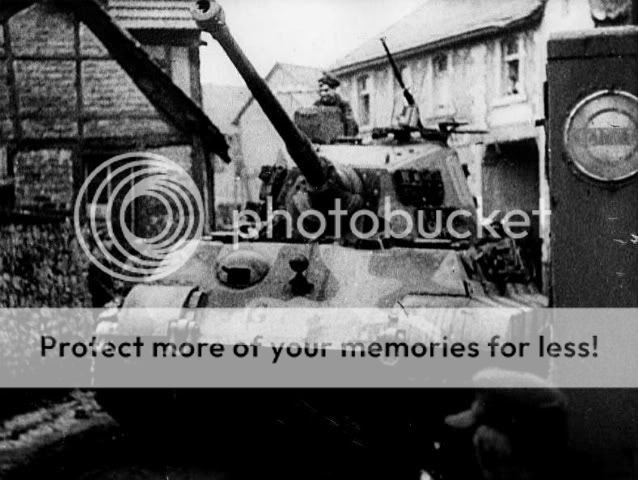
Navigating Tight Urban Streets
Certainly tanks of all sizes and makes got bogged down or fell through bridges on occasion, but the Tiger II did not do so at greater rates than other AFVs. Further, combat operations were not compromised in any significant way to accommodate the Tiger II.
Mobility:
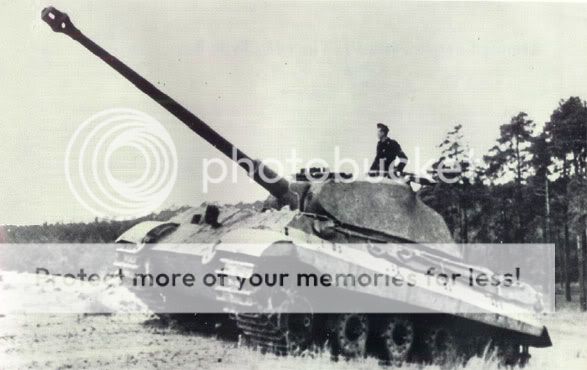
Propaganda Shot
Despite its weight, the Tiger II's advanced suspension system and powerful engine provided it not only superior mobility to Allied heavy tanks, but to their medium tanks as well. Crews loved the Tiger II for its maneuverability over virtually any terrain.
According to historian Thomas Jentz:
The Tiger II was remarkably agile for such a heavy vehicle. Contemporary German records indicate that its mobility was as good as or better than most German or Allied tanks.
Reliability:
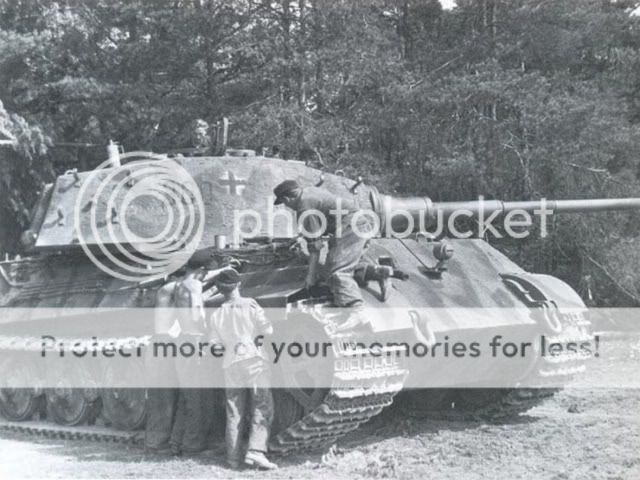
Maintenance
As with every new tank design during the war, including the much vaunted for reliability T-34, the Tiger II went through a teething process. The main cause of these issues was the added stress to the engine, which was essentially the same one used in the 12 tonne lighter Tiger I. This was exacerbated by inexperienced crews who were sent directly from the classroom into combat.
As the issues were identified, a number of strengthened engine components and new crew guidelines were developed and distributed. After these initial fixes, the Tiger II design proved to be a very reliable, far more so than the Tiger I. In fact, the Tiger II’s teething process was far shorter than that of the T-34 and the Panther which both ate transmissions for a year or more after development, or its direct competitor, the M26 Pershing, which was so inherently unreliable that it still couldn’t function competently in Korea and had to be pulled from combat.
Jentz says:
Reliability was improved over time with the continuous introduction of modified seals, gaskets and drive train components, driver training, and sufficient maintenance. Statistics from 15 March 1945 compare the availability of Tiger IIs with respect to other tanks: 62 percent of Panzer IVs, 59 percent of Tiger IIs and 48 percent of Panthers were operational by this period of the war.
Fuel Consumption:
This criticism has some basis, but has been blown way out of proportion. While indeed high at 4.9 l/km, the Tiger II’s consumption was not inordinately so.
Here are fuel consumption rates of some common late war tanks.
Medium
T-34/85 = 1.8 l/km
Sherman = 2.0 l/km
Panzer IV = 2.35 l/km
Panther = 2.8 l/km
Heavy
IS2 = 3.5
Pershing = 4.32
While the Tiger II is often singled out as a fuel hog, the reality is that its fuel consumption was in line with other vehicles of its size. The truth is that after Romania fell, German AFVs of all shapes and sizes were lost due to fuel shortages towards the end of the war. Under more normal circumstances, the Tiger II's fuel consumption would not have been such an acute weakness.
Cost efficiency:
This is the murkiest myth to debunk against the Tiger II as it does include a bit of subjectivity. I don’t know how many times I have read some variation of “the Germans should have made more low quality tanks instead of a few high quality ones”.
First, who would crew these tanks? Despite the Allied bombing campaign and the huge stresses on German industry, towards the end of the war there were always more tanks available than crews to fill them. Wartime pressures including fuel shortages and Allied air raids crippled the flow of trained crews to the Panzerwaffe. It became so dire that fresh crews with only minimal classroom training were given command of expensive, technologically advanced AFVs such as Panthers and Tiger IIs, with predictable results.
Second, the Germans learned early on that the most valuable component of a tank is its crew. The Tiger II preserved and enhanced the one advantage the Panzerwaffe had that endured throughout the war – their experienced tank crews. Under the command of these crews, the tank delivered devastating results on the battlefield far beyond its limited numbers – which will be discussed below.
Finally, that oft-quoted sentiment betrays a lack of understanding about German armored doctrine. Said doctrine dictated the need for a heavy tank, and the German heavy tank program was a limited endeavor meant to fill a limited role in the overall armored structure. Only 1500 Tiger II's were ordered, and it replaced the Tiger 1’s production lines on one floor of the Henschel plant. One may disagree with the need for a heavy tank at all, but the program did not significantly affect other tank production in any meaningful way. Germany produced 50,439 AFVs during WW2, only 1839 of which were Tiger I and II heavy tanks (1347 Tiger I's and 492 Tiger II's).
Despite this, the Tiger II is often held up as an example of German waste, when in reality the decision to replace the PzIV with the Panther is far more debatable.
Of course the Tiger II did suffer from some weaknesses. However, these were attributable far more to German late war circumstances than any inherent design flaws.
Late war German logistics: Tiger II's were far more likely to be lost due to a lack of fuel or spare parts than to enemy fire.
Crews: As could be expected, Tiger II performance varied greatly based on crew experience.
Deployment: Much like the first two weaknesses, the late war German position(and Hitler's interference) forced commanders to deploy their weapons systems in less than optimal situations. Tiger II's attempting to navigate the densely forested Ardennes during the Battle of the Bulge would be the most obvious example.
Combat Record
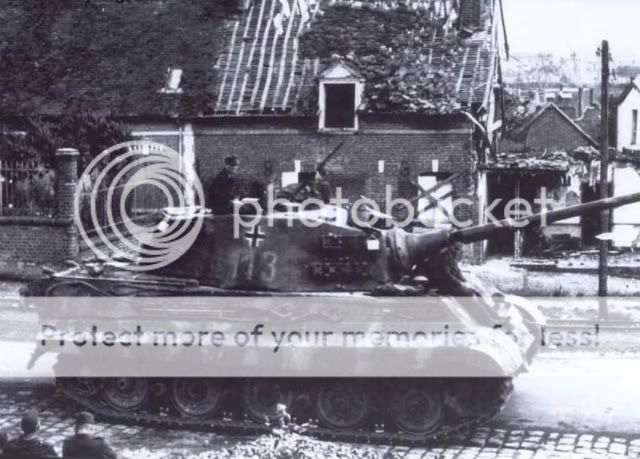
Moving into Position: D-Day + ?
The Tiger II's combat record is often written about purely in terms of its performance on the Western Front, and then only during the Ardennes Offensive. The tank performed well in Normandy in the defense of Caen, particularly during the blunting of Operation Atlantic. However, the dense hedgerows that characterize the area were certainly not ideal "tank country" and the Tiger II's main advantage - its standoff capability - was rendered virtually useless, as engagements were conducted at very short range. Still, the tank's superior armor made it a fearsome opponent. Again in Operation Market Garden, the Tiger II was called on to help blunt an Allied armored offensive.

Under Cover in Normandy
One day a Tiger Royal tank got within 150 yards of my tank and knocked me out. Five of our tanks opened up on him from ranges of 200 to 600 yards and got five or six hits on the front of the Tiger. They all just glanced off and the Tiger backed off and got away. If we had a tank like Tiger, we would all be home today.
- Report by tank commander Sergeant Clyde D. Brunson from 2nd Armored Division, 1945.
Of course, the Tiger II's most widely known campaign - and the one from which most "evidence" of its failings is drawn from - was in support of Operation Watch on the Rhine. There the Tiger II faced a "perfect storm" of the three weaknesses mentioned above - poor logistics, inexperienced crews, and deployment in less than suitable conditions. The dense forests negated the tanks advantages even more so than the Hedgerows of Normandy.
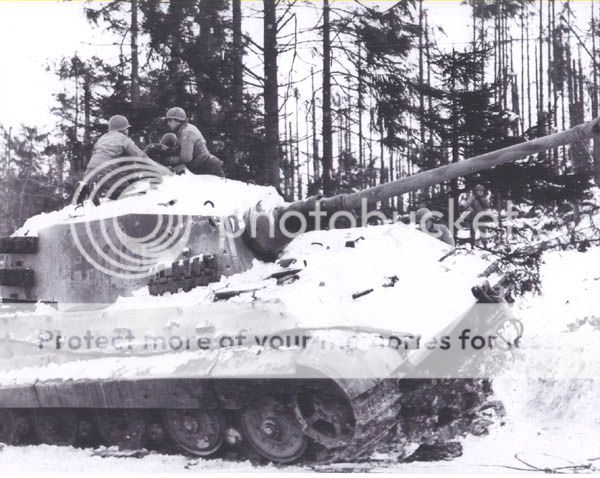
American Inspection
Stories of Tiger II's being disable by determined American bazooka crews, getting bogged down, and running out of fuel abound - and are all true. What is not said, however, is that the same fate befell German and Allied (minus the fuel shortage) AFVs of all shapes and sizes. The terrain was simply not hospitable to armored warfare - which was the reason it was neglected by the Allies in the first place.
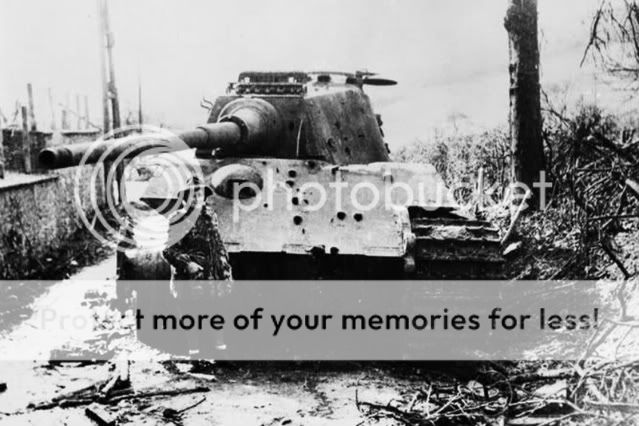
Knocked Out in the Ardennes

Not Penetrated
Further, what is not often mentioned is that the Tiger II performed very well in its role as a breakout tank during the Bulge. While a few tanks were lost to enemy action, and a greater number to mechanical issues and terrain difficulties, the majority of Tiger IIs sliced through Allied lines nearly imperviously until German forces inevitably ran out of fuel. That fuel shortage was predicted by German commanders before the operation and effected the whole of the German forces. It was certainly not unique to units operating the Tiger II.

Working with Fallschirmjager in the Ardennes
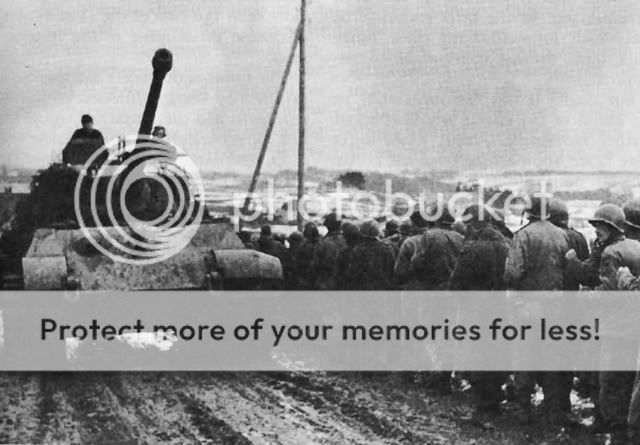
American POWs File Past a Tiger II
Despite the unfavorable conditions previously discussed, the lead element of the German assault, Kampfgruppe Peiper, utilizing Tiger IIs, left a path of destruction in its wake, including decimating American defensive positions and tank battalions. The kampfgruppe was later cut off and ran out of fuel, forcing its men had to abandon their equipment and retreat back to German lines on foot. The eventual fate of the kampfgruppe, however, was the result of logistics and operational issues that were the natural results of the insanity that was the Ardennes Offensive- not the Tiger II.
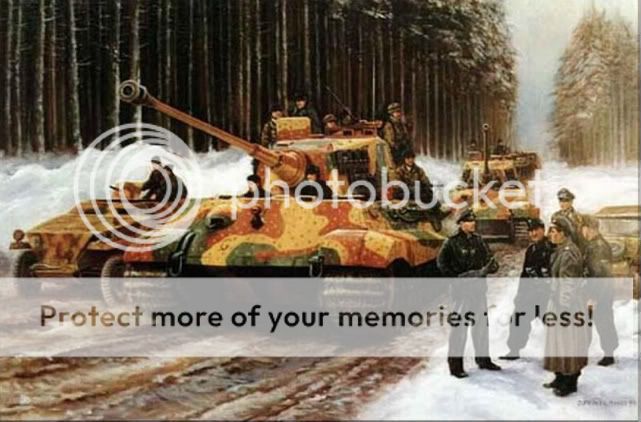
Artist's Rendering of the Infamous Kampfgruppe Peiper
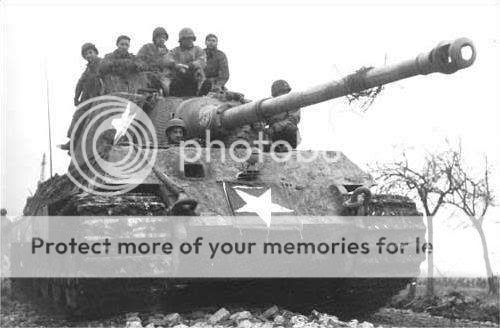
American Use During the Bulge
Left out of many discussions about the tank is the Tiger II's service on the Eastern Front. Here in more suitable conditions and under the command of well trained, experienced crews, the tank's abilities were fully exploited. The tank's reliability actually surpassed that of the Panther, and Wehrmacht and SS heavy tank battalions were used both on the defense and the offence to great effect.
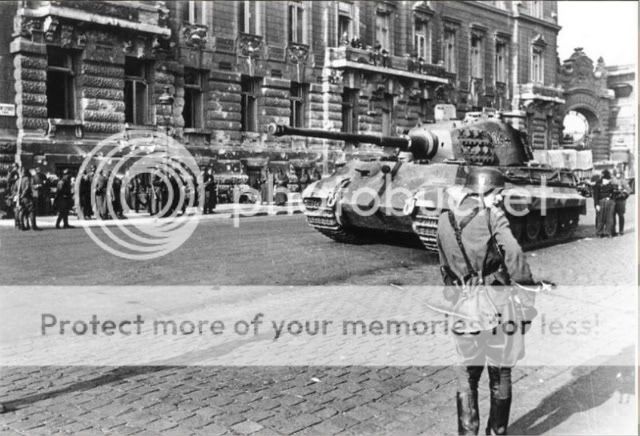
Tiger II in Budapest (1)
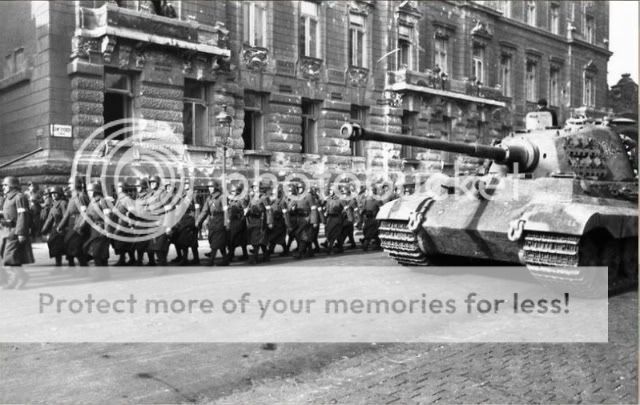
Tiger II in Budapest (2) Accompanied by German Infantry
Of particular note is the SS Heavy Tank Battalion 503, which played a key role in the critical Battle of Debrecen, which kept Hungary in the fight for Germany.

Street Fighting in Budapest

Originally Posted by
wiki
The 503rd remained in the Hungarian theater of operations for 166 days, during which it accounted for at least 121 Soviet tanks, 244 anti-tank guns and artillery pieces, five aircraft and a train. This was at the loss of 25 Tiger IIs; ten were knocked out by Soviet troops and burned out, two were sent back to Vienna for a factory overhaul, while thirteen were blown up by their crews for various reasons, usually to prevent them from falling into enemy hands. Kurt Knispel, the highest scoring tank ace of all time (162 enemy AFVs destroyed), also served with the 503rd, and was killed in action on 29 April 1945 in his Tiger II.
The Schwere SS Panzer Abteilung 503 (s.SS Pz.Abt. 503) claimed approximately 500 kills in the period from January to April 1945 on the Eastern Front for the loss of 45 Tiger IIs (most of which were abandoned and destroyed by their own crews after mechanical breakdowns or for lack of fuel.
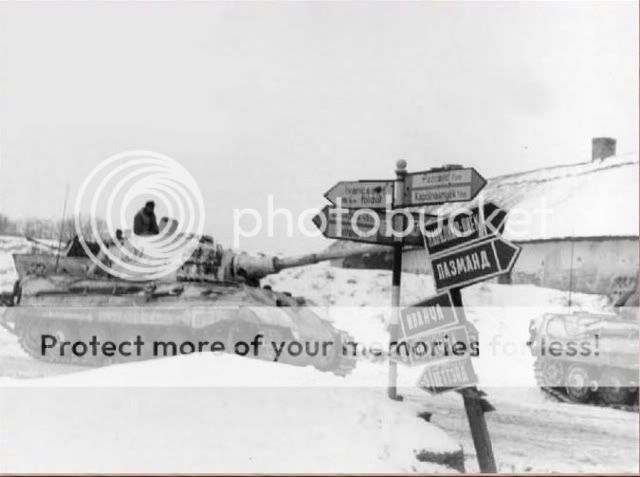
Operating on the Eastern Front
On the road from Bollersdorf to Strausberg stood a further 11 Stalin tanks, and away on the egde of the village itself were around 120-150 enemy tanks in the process of being refuelled and re-armed. I opened fire and destroyed first and last of the 11 Stalin tanks on the road….My own personal score of enemy tanks destroyed in this action was 39.
-SS-Hauptscharführer Karl Körner, schwere SS Panzer Abteilung (103) 503 / III SS Panzer Corps, East Germany, April of 1945.
In many ways, the Tiger II, like the Panther, represented the realization of the main battle tank concept. The traditional dynamic of speed, armor, and firepower where one had to be sacrificed to achieve gains in the other two no longer held. Technology had progressed to such an extent that the Tiger II boasted formidable specifications in all three areas. Operated by an experienced crew in the role it was intended to fill, the Tiger II was nearly invincible on the battlefield, and boasted a combat prowess beyond anything the Allies fielded during the war. Of course, the Tiger II was not flawless, but it was a very capable amored fighting vehicle - arguably the best performing tank of the war - and it merits some historical revision.
Originally Posted by wiki


Originally Posted by wiki


























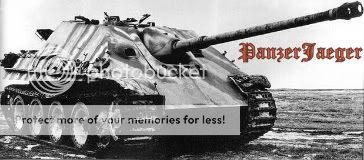

 Reply With Quote
Reply With Quote
Bookmarks